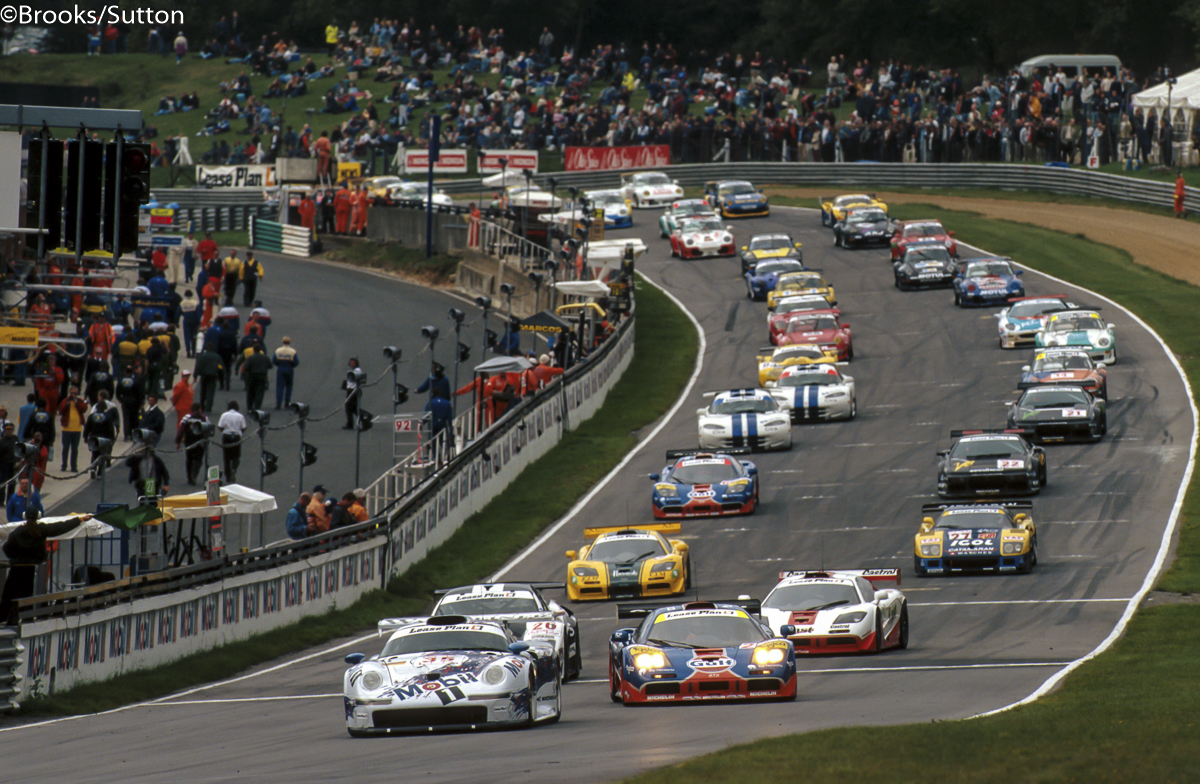
I have been at this internet blogging/posting/opinion lark for over 20 years now. I long ago accepted that most of my output will hardly be read, much less commented upon, for the most part bloggers write for themselves. Back in late 1996 I was following the BPR Global GT Series. For a season and a half it had been absolutely fantastic, great cars, great racing but by the last few races in ’96 it was clear that it was doomed. The arrival of the Porsche 911 GT1 run by the factory had changed the landscape irrevocably, those of us who enjoyed the congenial atmosphere of the BPR howled in protest, those who were really in the business made more pragmatic plans for 1997.
The sense of frustration that I felt was articulated in the following piece, posted on, I think, Club Arnage (actually it was the lamented P9.com), but I could be wrong, time does that. It had not long been up when I received a short, sharp, phone call from BPR, explaining that I was no longer welcome at their races and that my invitation to Zhuhai had been withdrawn. Perhaps I deserved that, you can’t take The Man’s shilling and expect not to be considered bought and I was more than a bit direct in my piece. In any case I was just a minnow, easier to make an example of me than Michael Cotton or Jean-Marc Teissedre, a ‘pour encourager les autres’ sort of gesture, not that I would compare myself to those two giants of the sportscar media tribe.
I had severely pissed off Jürgen Barth, the B in BPR and re-reading the piece at the time I saw why, though these days we are reconciled and he later had the good grace to admit that most of what I written was on the money. Well it should be, I had good sources. So I stumbled across this document while looking for something in the archive and felt it was time to give it another airing…………somehow I don’t think that there are any invitations left to cancel these days…………….
John Brooks, February 2015
Since the summer recess and the trip to Suzuka we have had three rounds of the Global GT Championship organised by the BPR.
Four events have dominated the past six weeks. Ray Bellm and James Weaver have secured the title in their GTC Competition Gulf Racing McLaren by scoring victory at Nogaro, while similar results for Porsche Motorsport at Brands Hatch and Spa have threatened the very future of GT racing in Europe. The Harrods backed McLaren, victors at five races in the past year, withdrew from the series amid a welter of speculation of family disagreements and financial problems. At Nogaro, the talented and popular GT2 driver, Soames Langton sustained serious head and neck injuries and still lies in a coma as this article is being written. That dreadful situation makes all the political posturing and wrangles witnessed over that weekend pretty dam irrelevant.
The general feeling of well being and contentment that was so evident at Silverstone back in May has evaporated in the face of the performance of the GT1 Porsche. Disbelief at Brands Hatch was followed by depression at Spa and last weekend discord and dissent at Nogaro. The series itself is in danger of falling apart with the three organisers at loggerheads with each other and with the teams.
How has this state of affairs been allowed to develop and is the situation beyond redemption?
The teams are almost unanimous in their opposition to the decision to allow the works Porsche 911 GT1 to run in the latter part of the season. The objections are based on the fact that the car is not yet for sale in a road going form and is a brilliantly conceived racing car which COULD be adapted for road use – much like the Dauer 962 which won Le Mans in 1994. The guiding principle behind the concept of GT racing as set out by BPR was to take road cars and adapt them to race on the track, like the F40 Ferraris and F1 McLarens . About the only person who can hold this view of the Porsche GT1 with a straight face is Jürgen Barth who, aside from being the B in BPR, is also a manager in Porsche Motorsport. He is also a former Le Mans winner for the brand. While Barth sees nothing wrong with this conflict of interest others are not so generous.
The main objections to the newcomer are not wholly based on the crushing superiority displayed by the 911 at Brands Hatch and Spa – though this must feature somewhere, no one would care if it were slower. The objections raised by the more articulate existing competitors are firstly that the Porsche is outside the letter and spirit of the regulations as currently exist, whatever anyone cares to say about it. Secondly the appearance of this kind of prototype will drive away the gentlemen drivers on grounds of performance and cost. Cars that develop shed-loads of downforce and have ABS on their carbon fibre brakes will be outside of the current driving abilities of the amateur drivers, until recently the raison d’être for the series and certainly forming the backbone of the entry. As to cost, it is said that the Porsche engines will only run for a maximum of 30 hours. That means a rebuild every two to four races against, for instance, the V12 BMWs which are unchanged throughout the whole season excepting a quick check prior to Le Mans. The teams’ overheads would rocket with additional “spanners” required for the ABS system, the turbos, the engine itself and also for data logging; this could amount to 3 or 4 extra guys per car which would put maybe £600,000 plus on to the operating costs for a two car team. This is only the tip of the iceberg.
Another consideration with finance is that if the running budgets get much above the £1-£2 million bracket that the top teams spend each season, then there is a little man in Prince’s Gate who has the opinion that such wealth should be going into Formula 1 and not be wasted in sportscars or anywhere else. As history shows, he is not beyond manipulating circumstances to ensure that this becomes the case. In addition, manufacturers only involve themselves in racing when there is some commercial payback so will not hesitate to up the ante financially till they are winning, driving away the private teams and drivers.
It must be acknowledged that, after Formula One, only Touring Cars provide an adequate TV audience and exposure for the investment required. Peugeot went into the Grand Prix arena in 1993/94 and reduced it’s outgoings from the stratospheric levels required to run a pseudo-F1 car at Le Mans for 24 hours. It was reported at the time that over £50 million was spent in 1992/93 which really is commercial lunacy, even for those receiving state subsidies on a French scale.
Those of us who witnessed a strong sportscar championship, Group C, disintegrate in 1991 and 1992 will feel an uncanny parallel with the circumstances that are unfolding around us. Porsche indeed may regret their approach if they succeed in remaining eligible for the 1997 Championship. With the demise of ITC, there are a number of teams and manufacturers looking to find an outlet for their sporting ambitions. It would not be beyond the bounds of reason that a Mercedes-Benz or an Alfa Romeo could commission Zakspeed or David Price Racing to build a two-seater grand prix car which would blow the doors off the GT1 Porsche much like Jaguar, Sauber and Peugeot did to the 962 in Group C after 1987.
The row over the eligibility of the Porsche has given a focus to the general discontent with the BPR Organisation. The teams have had problems with the way that the series is run. The proposal (made in June) to introduce two rounds to be staged in Brazil during mid December angered those who had already finalised their plans and budgets. Even when these events were no longer to be points-scoring, they seemed to be symptomatic of management that acted on a day-to-day reactive basis, apparently without any strategic considerations or appreciation of the obstacles faced by a team in running a race programme.
During the Nogaro weekend the ire of the teams was further inflamed when Barth brought round representatives from Enna-Pergusa, which has been touted as the location of the first round of next year’s championship. No one wants to visit Enna (and this has been made pretty clear in the past two months) or indeed any circuit which does not have proper facilities for the teams and media (such as Anderstorp, Nogaro, Paul Ricard, Brands Hatch or Moscow). The teams contend that there are plenty of locations with modern facilities that are crying out for the great package that is GT racing and that there is no need to return to any backwaters, no matter how friendly the locals. Sometimes it is held that this is not the fault of the clubs but of indecision on the part of BPR. At Anderstorp the organising committee put forward a proposal to alter the layout of the pits which would ease the problems faced by the teams but this went largely unheeded by BPR.
Where all this will go is anyone’s guess but the status quo will not be maintained. The three BPR founders, Jürgen Barth, Patrick Peter and Stéphane Ratel, are having a summit this weekend and the word on the street is that only B and R will be around to meet with Bernie Ecclestone next week. The FIA is expected to take over the TV rights, and possibly the series, which will leave the survivors out in the cold. Even if this does not happen then there are serious threats from the proposed German GT series which is being set-up out of the wreckage of the ITC failure, with big funding and the backing of manufacturers which will dilute support for the European series. There have also been rumbles from other parties who have threatened to do a BPR and arrange an international championship, properly funded and run through the FIA.
Meanwhile, Andy Evans was at Spa, having allegedly purchased IMSA (I lost track of THAT story while on holiday), and he was courting teams to go to his new GT based championship in the States. He had the fervour of born-again Christian when talking about GTs and sportscars, declaring that we have to get the young people involved (God not them again, can’t we just have a series for old farts like me, somewhere safe for us to dribble on about the good old days, when Oasis was something that Omar Sharif shot people over). Evans, it is said, has the ear (and pocket) of Bill Gates of Microsoft and has to be taken as a heavy shaker and mover. Some of his pronouncements were a little hard to understand such as the assertion that he had agreed the take-over of TV rights on sportscar racing from Bernie…..as this is the real substance of the “Bolt’s” control over motorsport I found it hard to accept that this asset would be transferred but Bernie is almost always ahead of the pack, so it COULD be true for some arcane reason – perhaps it is the final expression of his contempt for this form of competition.
While all this wretched politics has been going on what has the action from the tracks been like?
Well, the three locations of Brands Hatch, Spa Francorchamps and Nogaro gave an interesting contrast. Brands Hatch is a fantastic place to race and spectate but is dated in terms of ’90s motorsport with a lack of run off areas and cramped pits, it has the air of a faded ’60s rock star trying to live off former glories when in fact the show has moved on.
Spa offers Brands Hatch a vision of what is possible, as it is probably the greatest circuit in the world, magisterial in scope and setting. It arose out the ashes of the original Spa public road course, which by the early ’70s was outdated for modern motorsport, though admittedly the Belgian alternatives were pretty grizzly, Zolder or Nivelles. Nevertheless the old Spa was a place of dreams and nightmares, representing the brighter side of the traditional track at the weekend were those sportscar icons backed by Gulf Oil, the Ford GT40 and the Porsche 917. This raised a sparkle in the eyes of those who witnessed Pedro and Seppi door handling their 917s into Eau Rouge in the 1970 edition of the 1000kms. The revised circuit has distilled the essence of the great original in a way that the new Nürburgring has signally failed to do. The drivers love it, as if you achieve something in the Ardennes it gives a sense of intense satisfaction, a job well done. On Friday night at the BPR dinner, Lindsay Owen-Jones was bursting to tell someone (in this case me) that he had managed 2:22 on a track that was still drying off and, from the look on his face and the emotion in his voice, he had conquered his own personal Everest.
Nogaro was somewhat less grand than either Spa or Brands Hatch and epitomised the problems of racing at these upmarket club circuits. First it should be recognised that there is great enthusiasm and passion shown by the clubs at places such as Nogaro, indeed most of us would go back just for the food and wine, especially the wine…… but the pits were wholly inadequate for international racing with all the equipment having to be transported under a tunnel from the transporters and then back for each session. The accident which befell Soames Langton was handled in an exemplary fashion from the medical side. However one would have to question the judgement of those who did not bring out the pace car when the full extent of the incident and the length of time that it would take to extract the stricken driver became evident. (I have subsequently learnt over the years how easy it is to be an armchair critic of Race Control and generally how wrong most of such criticism is and how easy it is to be wise after the event. I have no doubt that this falls into that category.) This is highlights one of the biggest problems facing the BPR series in the difference in attitudes and approach between those who go racing for a living and those who do it for fun and reconciling these two philosophies has not proved easy.
During the track action at both Brands Hatch and Spa it was as if a third class had been introduced above GT1 and GT2 with the appearance of Stuck and Boutsen in the Porsche. At both circuits the car was in a completely different race to all the others. It had more power, had better fuel economy, had more downforce, ABS brakes and in Stuck and Boutsen really experienced, very quick drivers, in short it had everything. The team had a vaguely embarrassed look on their faces when the car crossed the line for victory at Brands Hatch and then Spa. Thierry Boutsen managed to introduce a Formula 1-style bullshit press statement with some lame swill about how hard it had been and that something could have gone wrong at any time, blah, blah, blah. The Belgian got out of the 911 at Brands Hatch looking like he had taken granny for a trip to the shops, not been in a two hour stint behind the wheel of a racing car, Boutsen is not demonstrative at the best of times but here he was almost asleep. I don’t mind Porsche building a better car within the rules, but I do feel insulted when they try to convince me with PR gibberish that my eyes and brain are deceiving me as to the real action on the track.
Ray Bellm and James Weaver took the title at Nogaro and most in the pit lane would say that they deserved it. Ray is far and away the best of the non-professional drivers. He can be a little prickly to deal with, but he has earned the championship with five wins in ’95 and five more in ’96 (if you ignore the Porsche at Spa). The partnership with James had the right combination of speed and pragmatism that titles are made of. GTC Competition took a long hard look at why they were pipped at the post in 1995 and put these minor problems right and the result is there for all to see. Congratulations are due…..
Both at Brands Hatch and at Spa first lap indiscretions led to great comeback drives which ultimately did not get their just reward. John Nielsen tripped up at Druids and then he and Thomas Bscher drove the West McLaren on the limit for three hours but ran out of petrol within sight of the line, losing third place to the second Gulf F1 GTR of Lindsay Owen-Jones and Pierre-Henri Raphanel. At Nogaro a Touring Car-style attempt to win the race at the first corner by Peter Kox (substituting for a Japanese-bound John Nielsen) led to Jean-Marc Gounon in the ENNEA Ferrari F40 and Jan Lammers in the Lotus taking a trip into the barriers. Gounon got pushed back onto the track and appeared to wait for the race to be restarted by blocking the racing line, when that did not work he set off in pursuit already a lap and a half down. He drove the doors off the F40 and was visibly quicker than anything else out there. With 20 minutes to go he came in for a splash and dash while just 20 seconds behind the leading McLaren, Jean-Marc gave the clutch death by dropping it on the rev-limiter, braking a driveshaft or so it seemed from my angle. A poor reward for such a epic drive. He kicked the car in frustration………
Down in GT2 the decision of the Konrad and Roock teams to dispense with any further attempts to make the EVO 911 GT2 work and concentrate their efforts in GT2 has upped the ante for all the competitors in the class. At Brands Hatch and Nogaro, Bob Wollek and Franz Konrad emerged triumphant after a long battle with the Marcos of Cor Euser and Tommy Erdos and the Roock Racing 911 driven by Ralf Kelleners, Gerd Ruch and Bruno Eichmann. The class victory for the season will now go to Ruch and Eichmann which, like their GT1 counterparts Bellm and Weaver, is thoroughly deserved, a solid performance from team and drivers, always on the pace.
Further back on the grid there was a stark illustration of the great highs and terrible lows that involvement in motorsport will inflict on you. Last year Lanzante, with some covert help from the factory, triumphed at Le Mans. Since Suzuka at the end of August it has all been downhill. Soames Langton wrote off the car in practice at Brands Hatch. Then a struggle with engine maladies at Spa appeared to end with a podium finish, till they were disqualified for Paul Burdell not doing the required time behind the wheel. Then came the accident at Nogaro last week with Soames suffering grievous injuries. Those of you waiting to read on your Ceefax of Damon Hill’s triumph in Japan (hopefully) will also get a message (page 366) that Soames is out of his coma and on the way to full recovery, at least that’s what will happen if there is any justice left in this world.
Next it is off to China if there is still a series.
“It’s a funny old world” as someone once declared.
jb
Well I got the China bit wrong and, tragically, Soames never did wake up. He finally passed away in 2011, a blessed relief for his family and for him. I paid tribute to him back then HERE
The photos are from the 1996 season and give a small reminder of a time when GT Racing was flourishing. Indeed Stéphane Ratel celebrates the twenty-fifth anniversary of his SRO outfit in 2017, bulging grids and great racing in his flagship Blancpain-backed GT3 series illustrate perfectly that he learnt the lessons from the problems encountered in 1996 to 1998 seasons. We are lucky that he did not allow the ship to founder.
John Brooks, February 2015

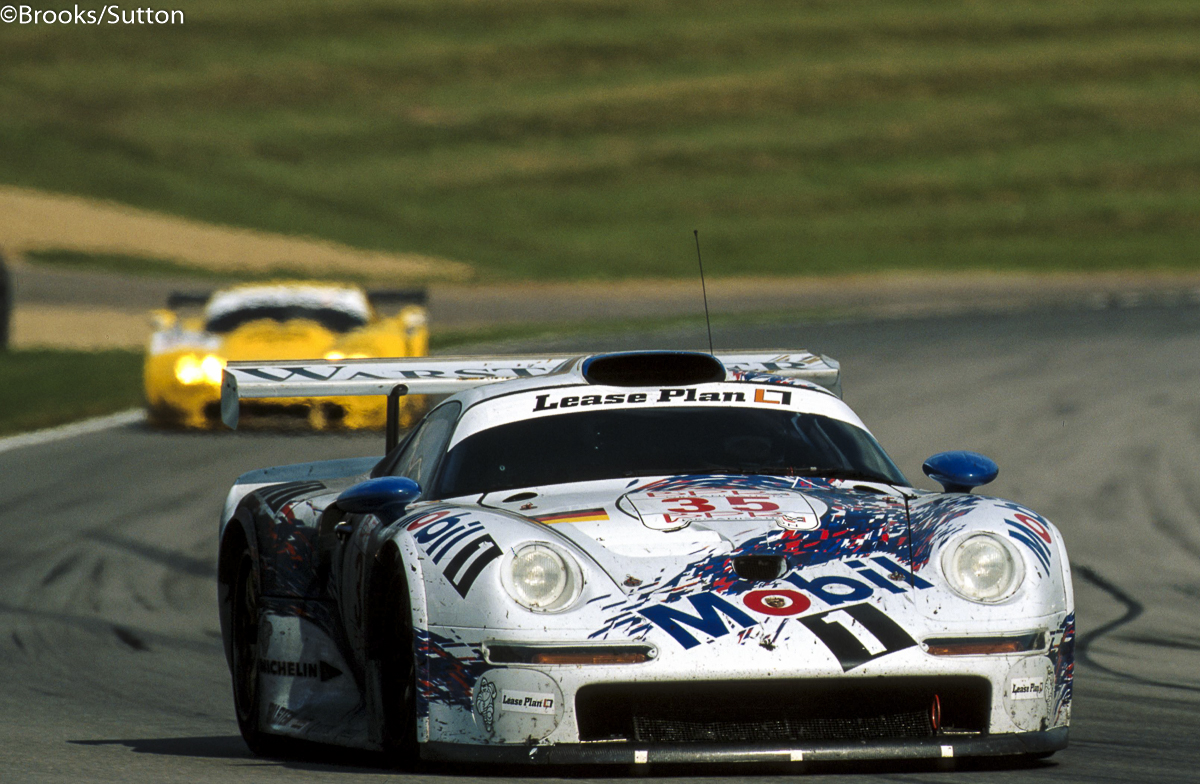
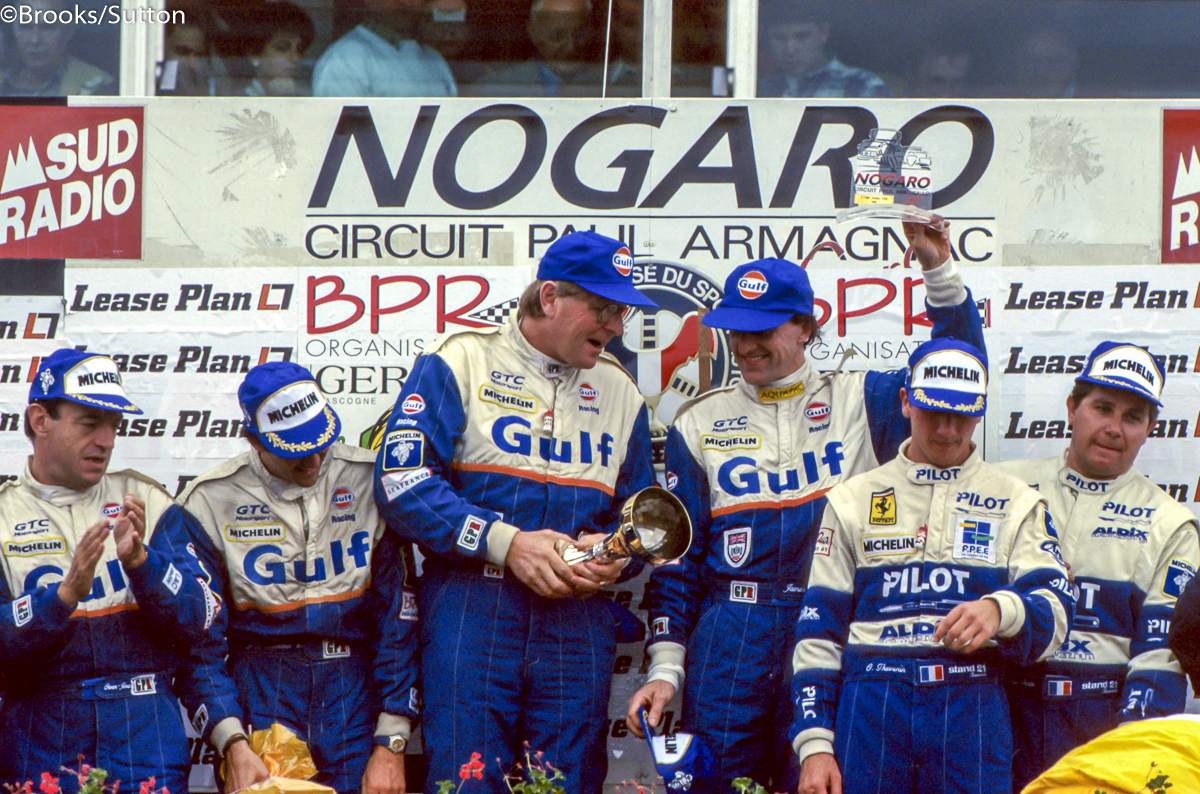
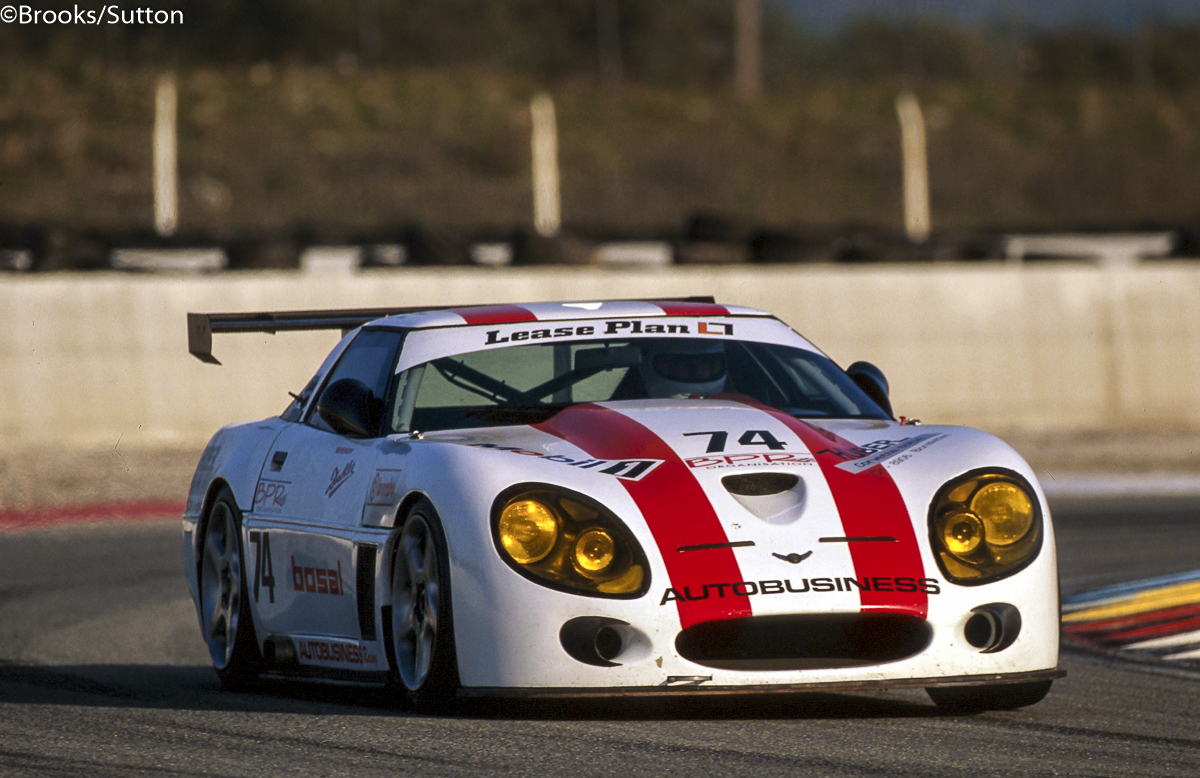
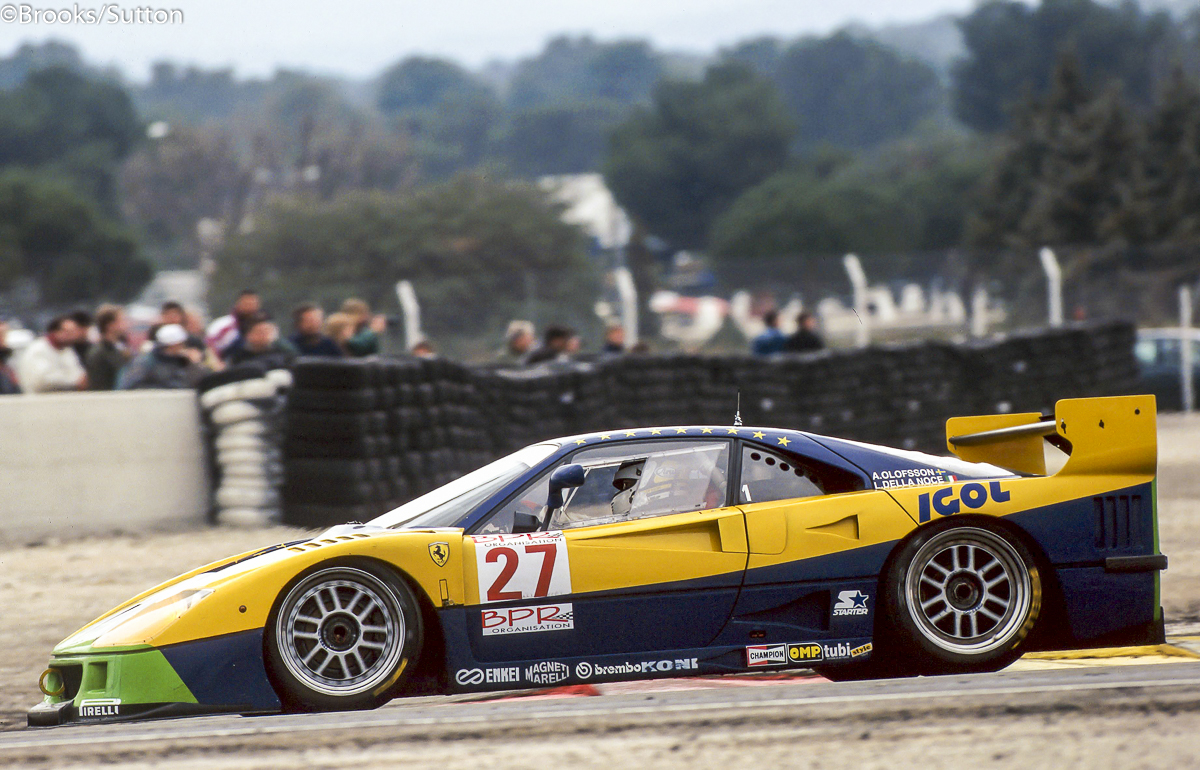
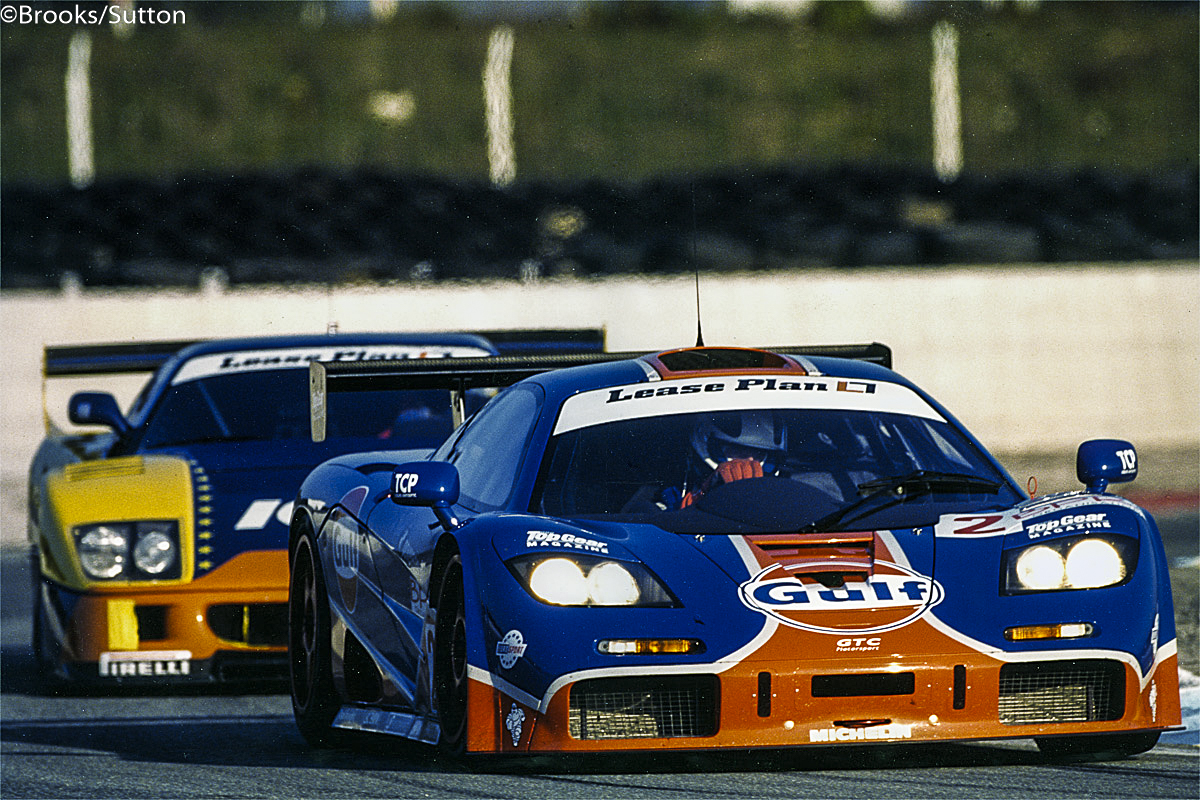
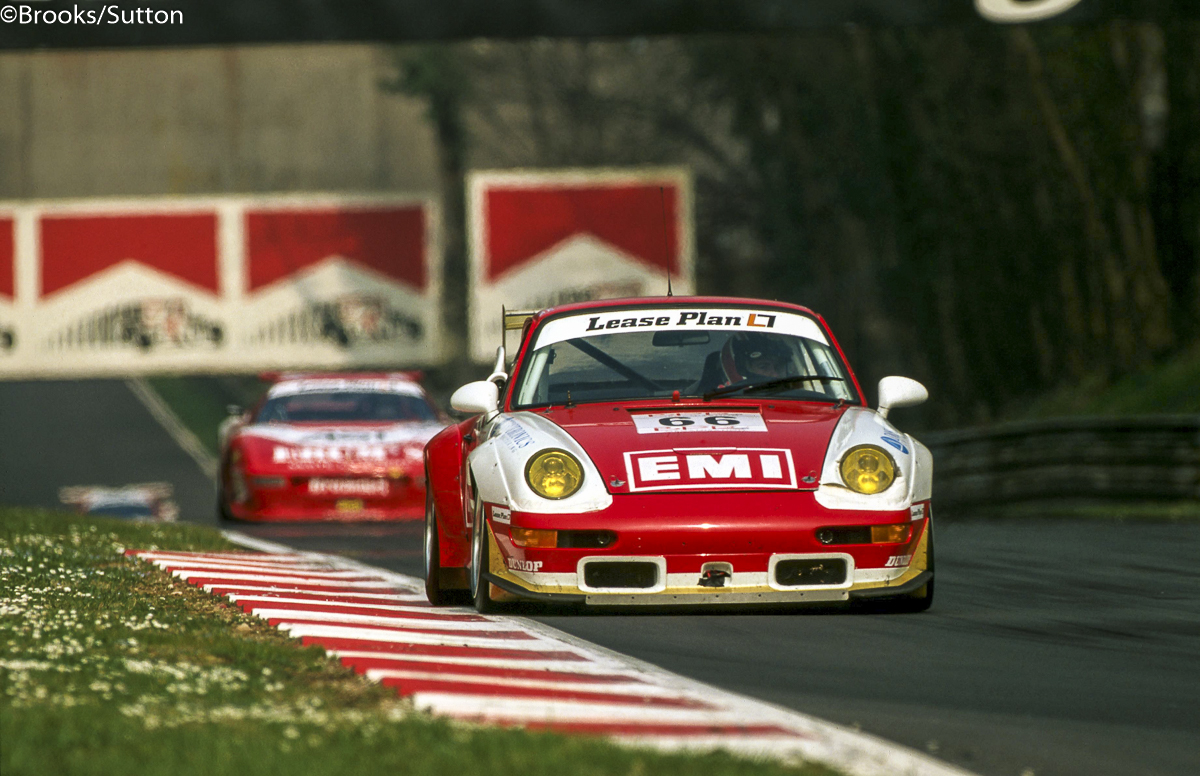
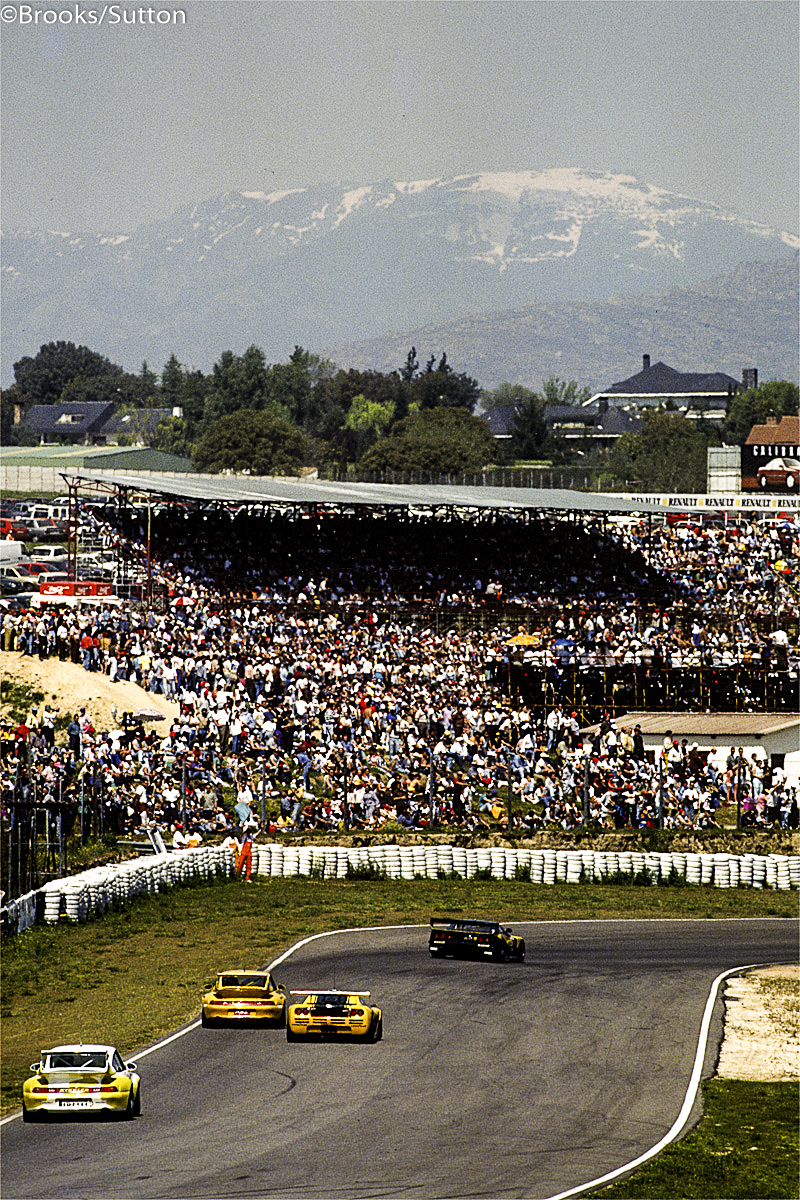
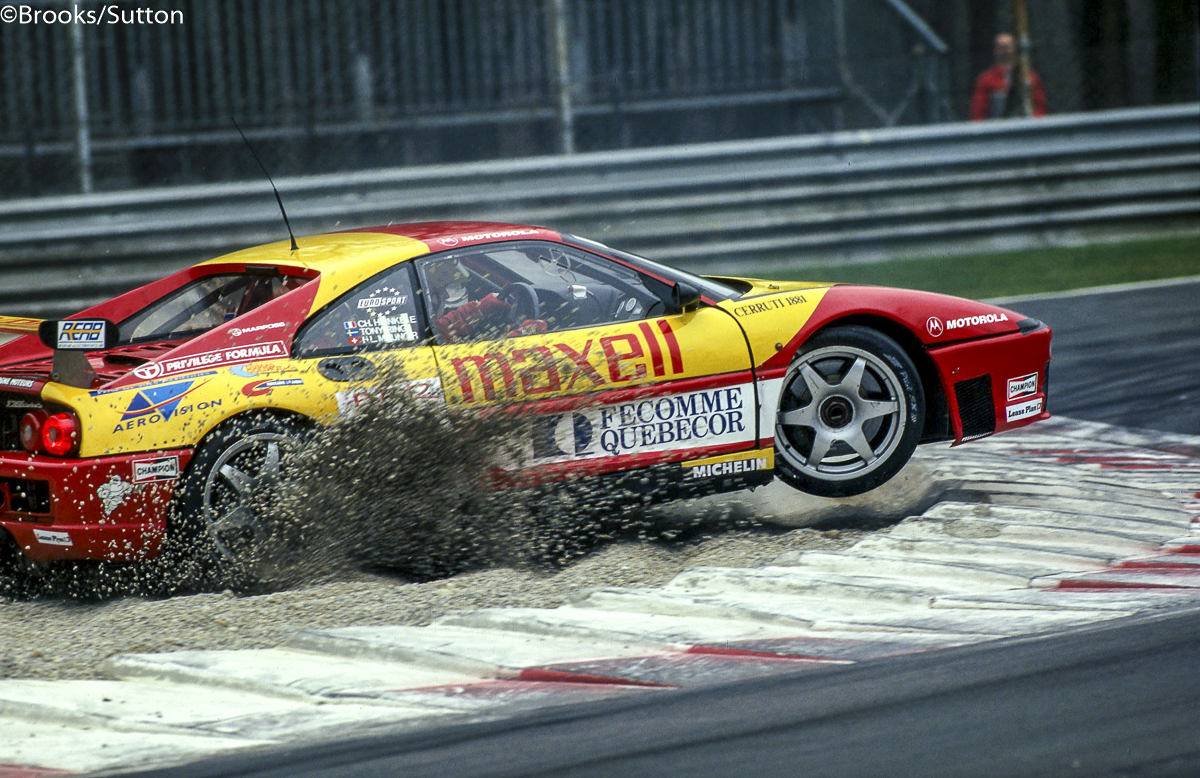
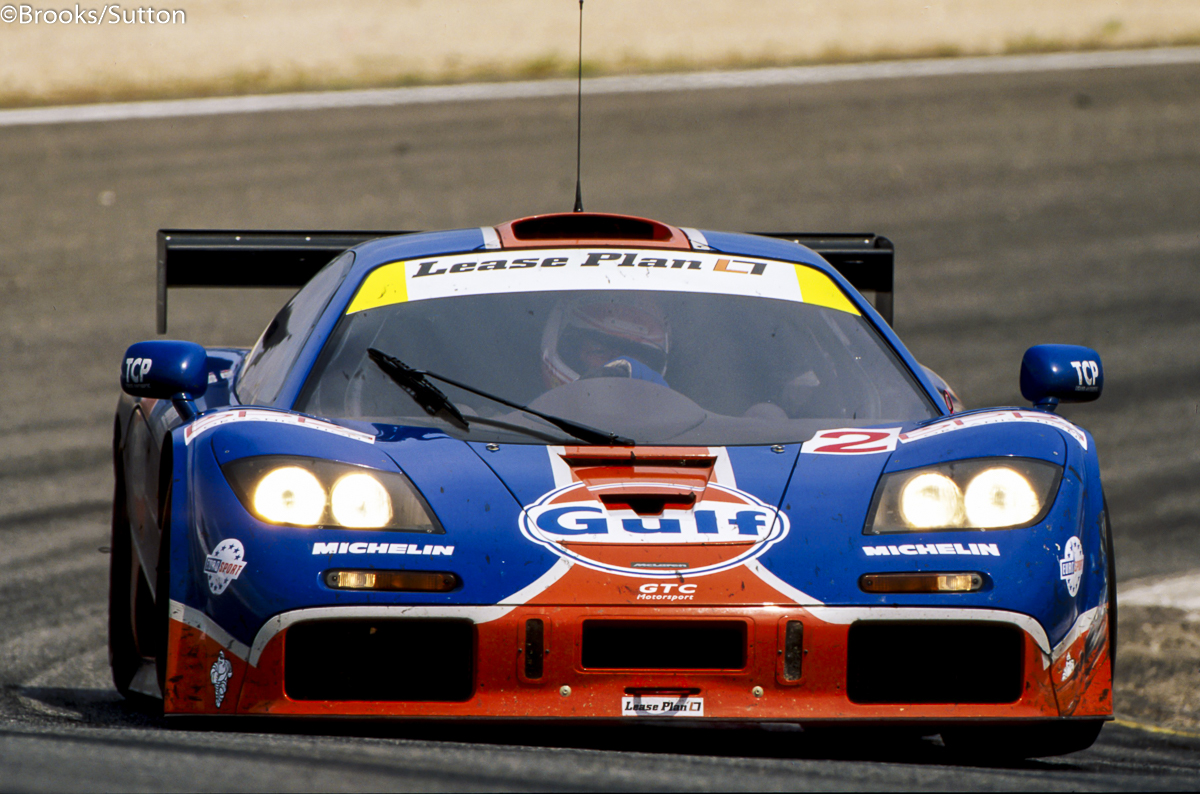
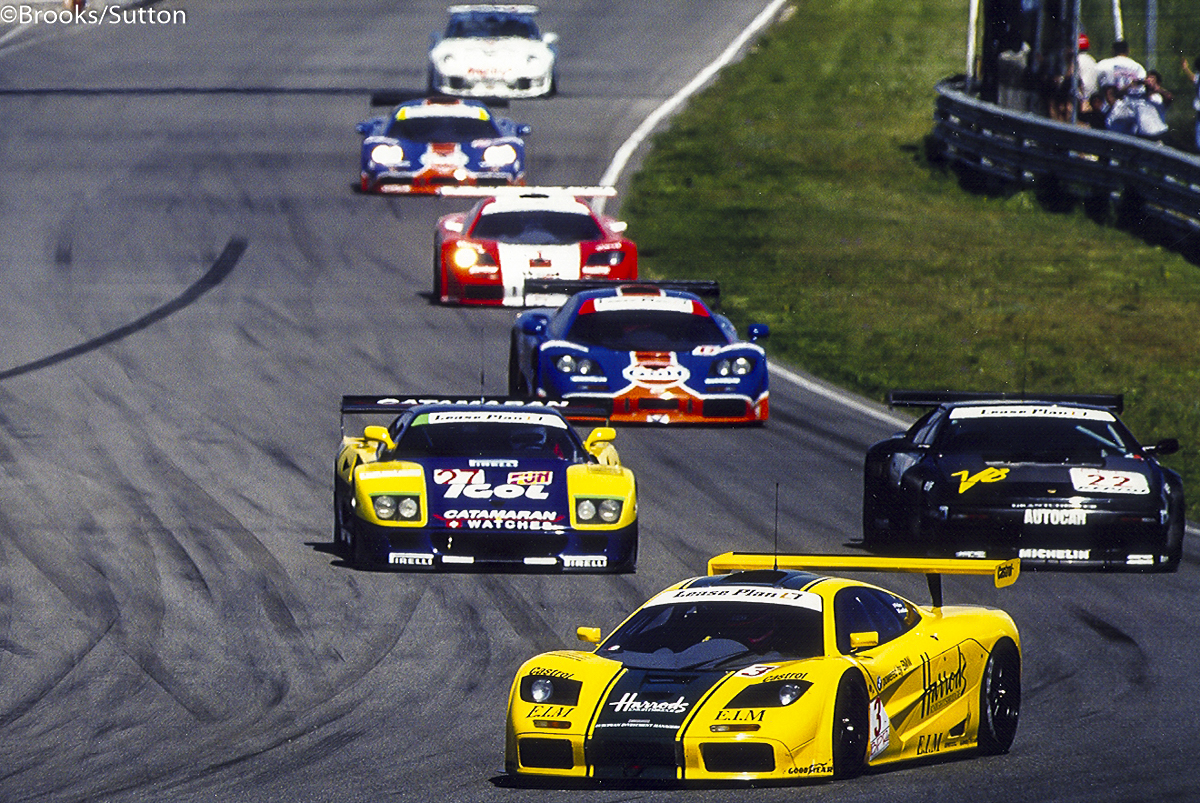
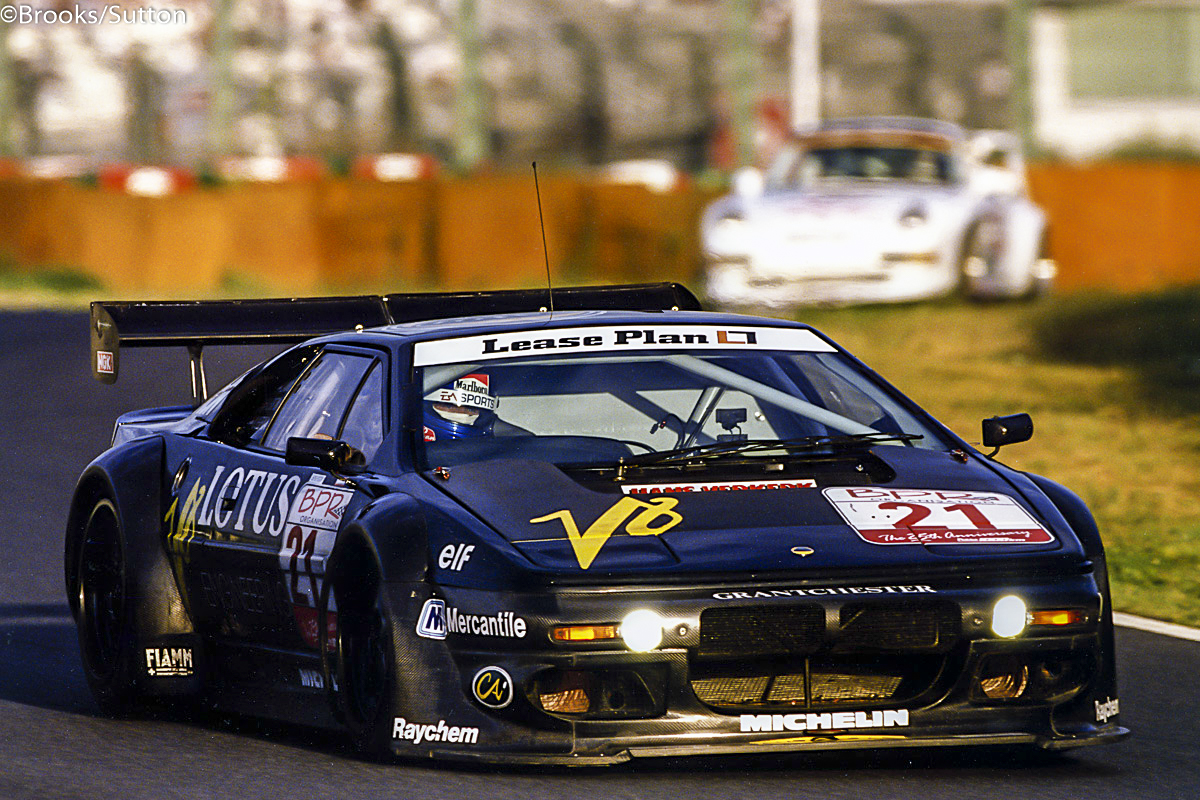
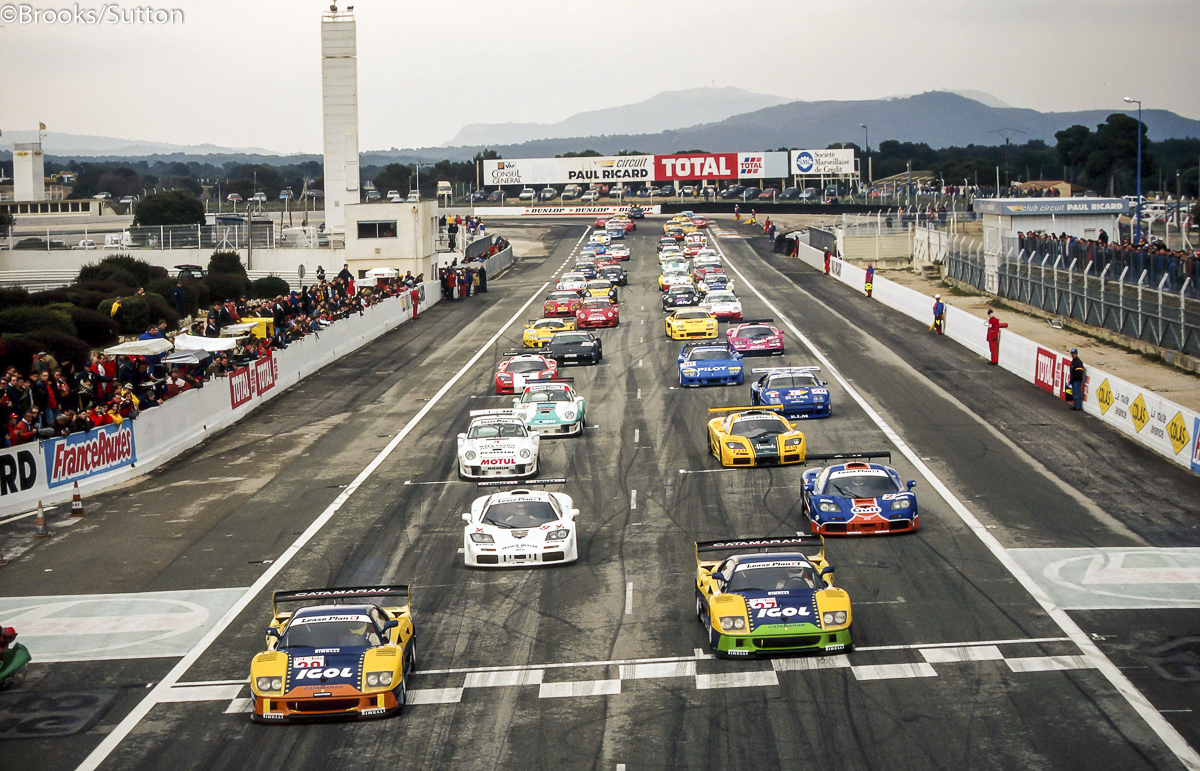
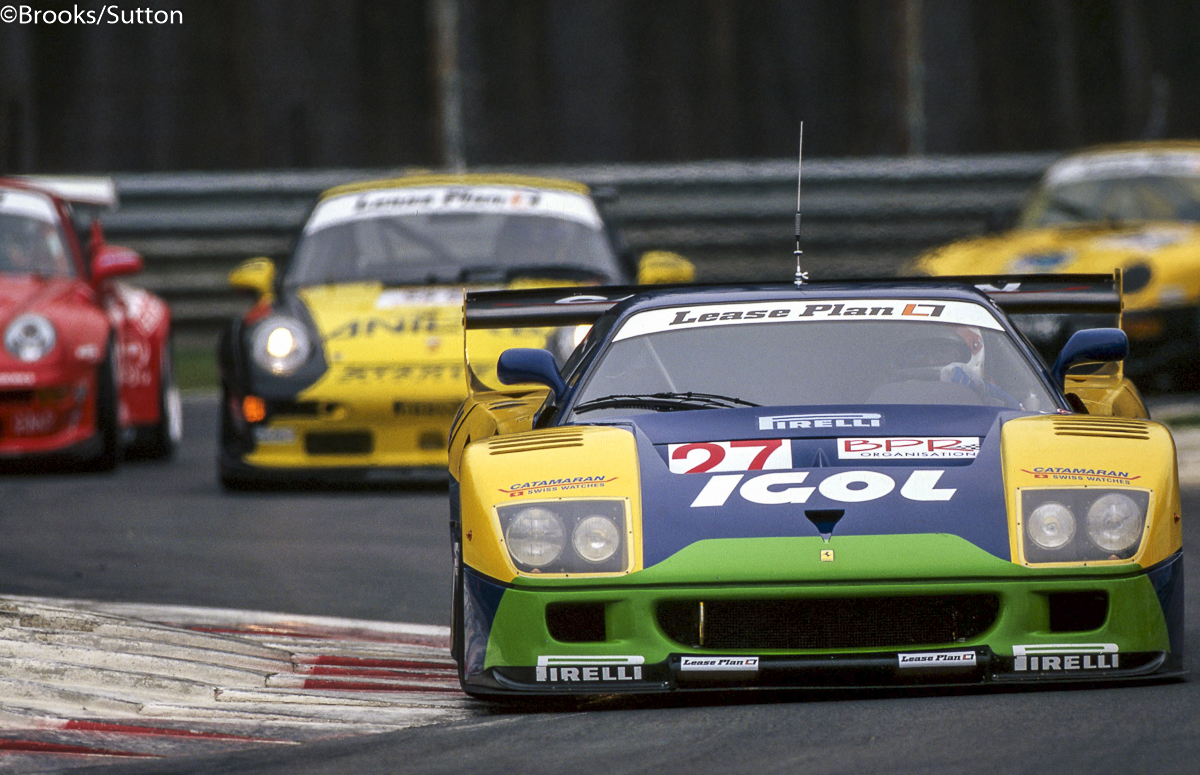
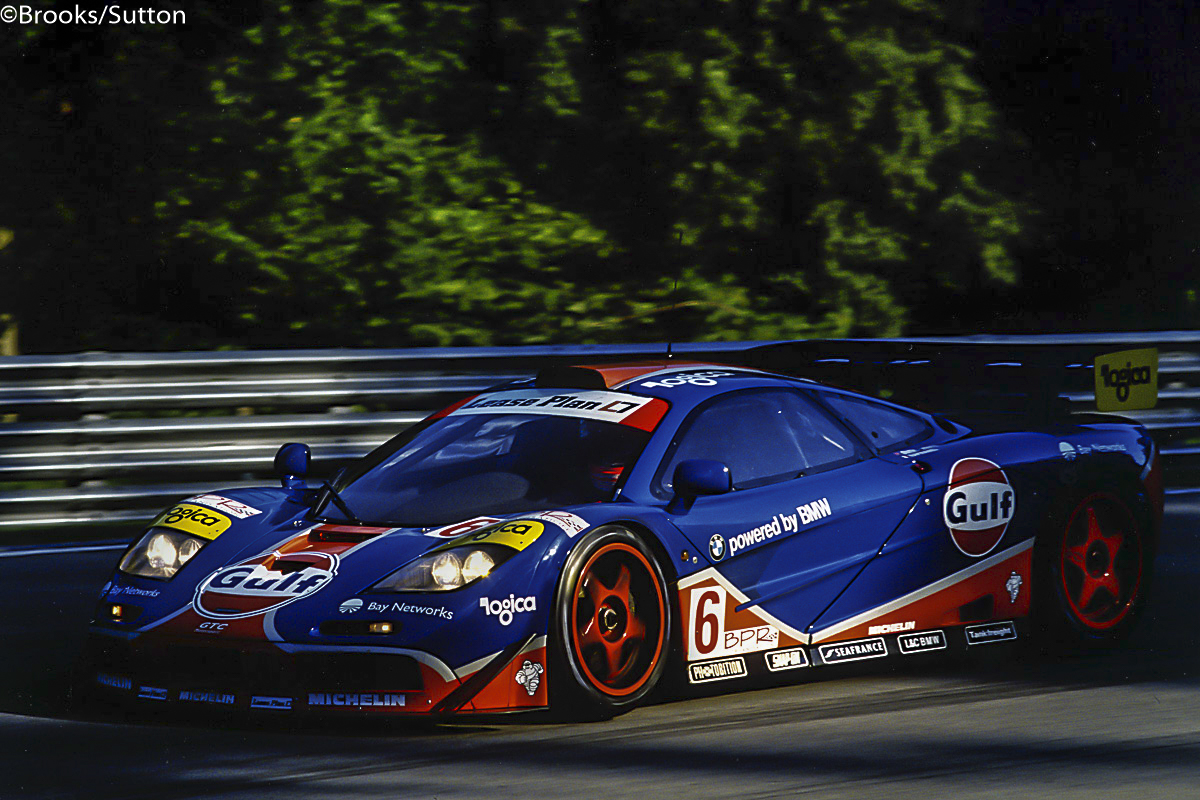
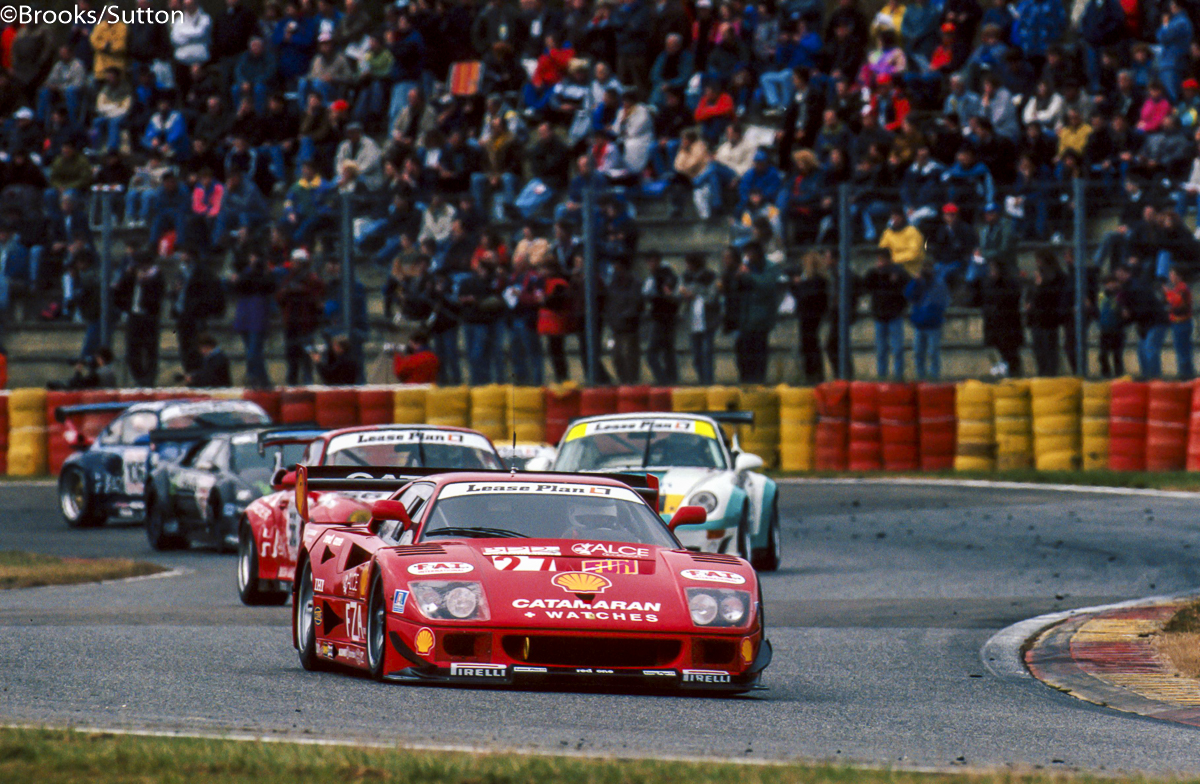
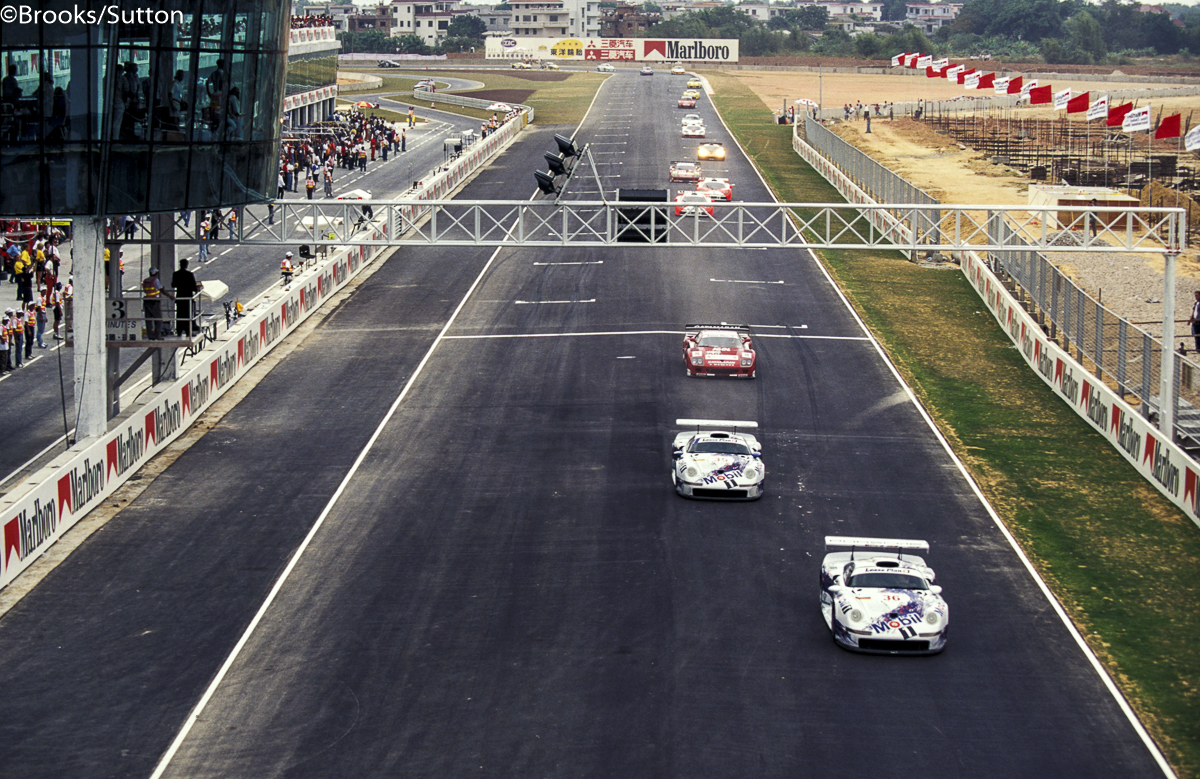
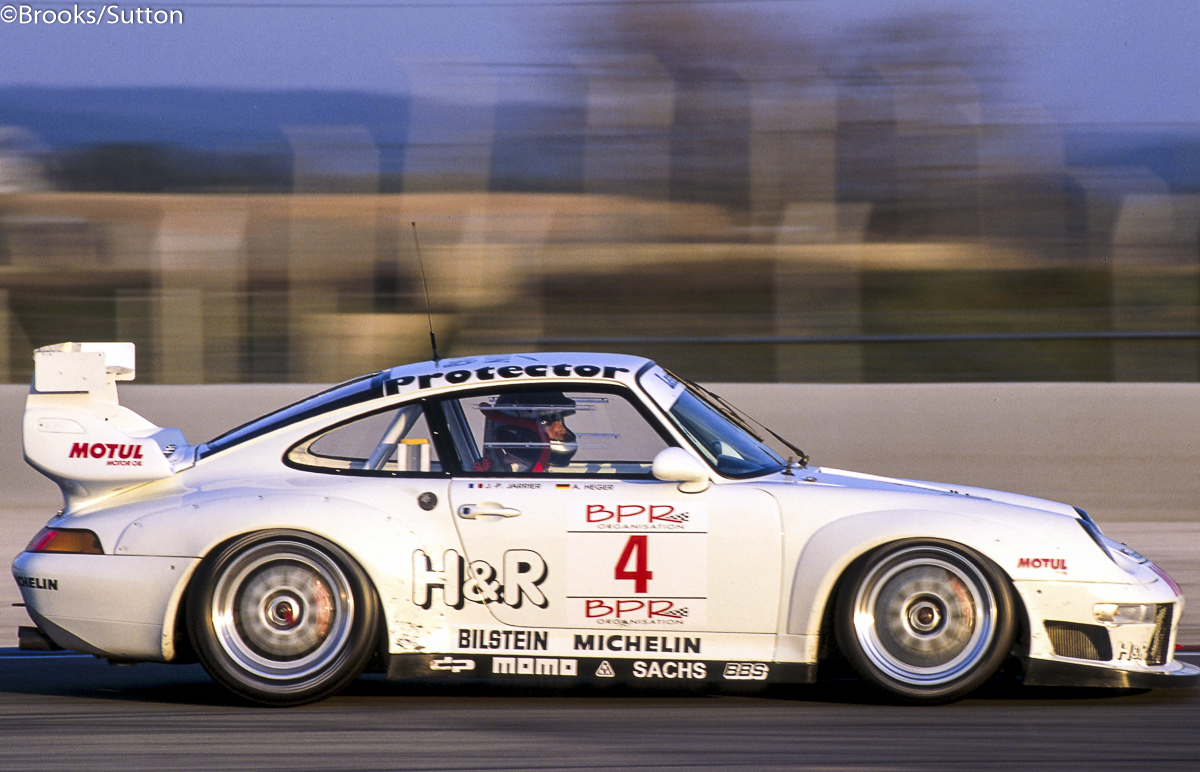
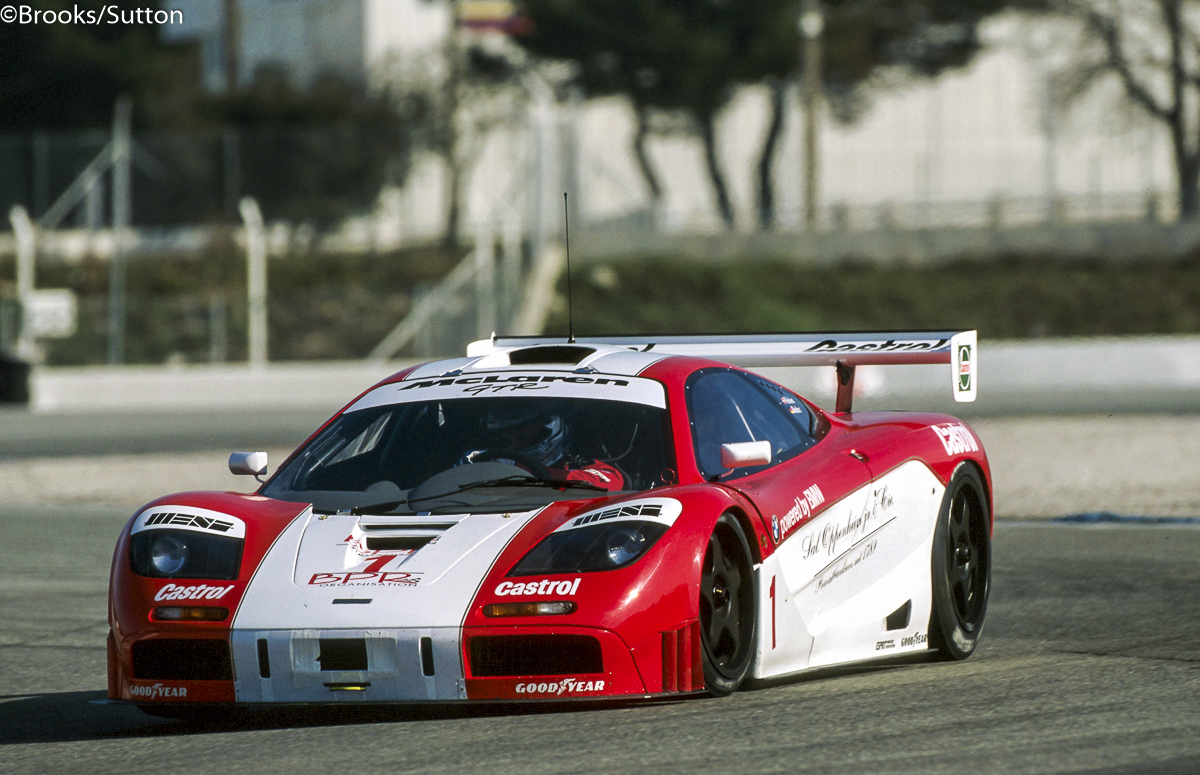
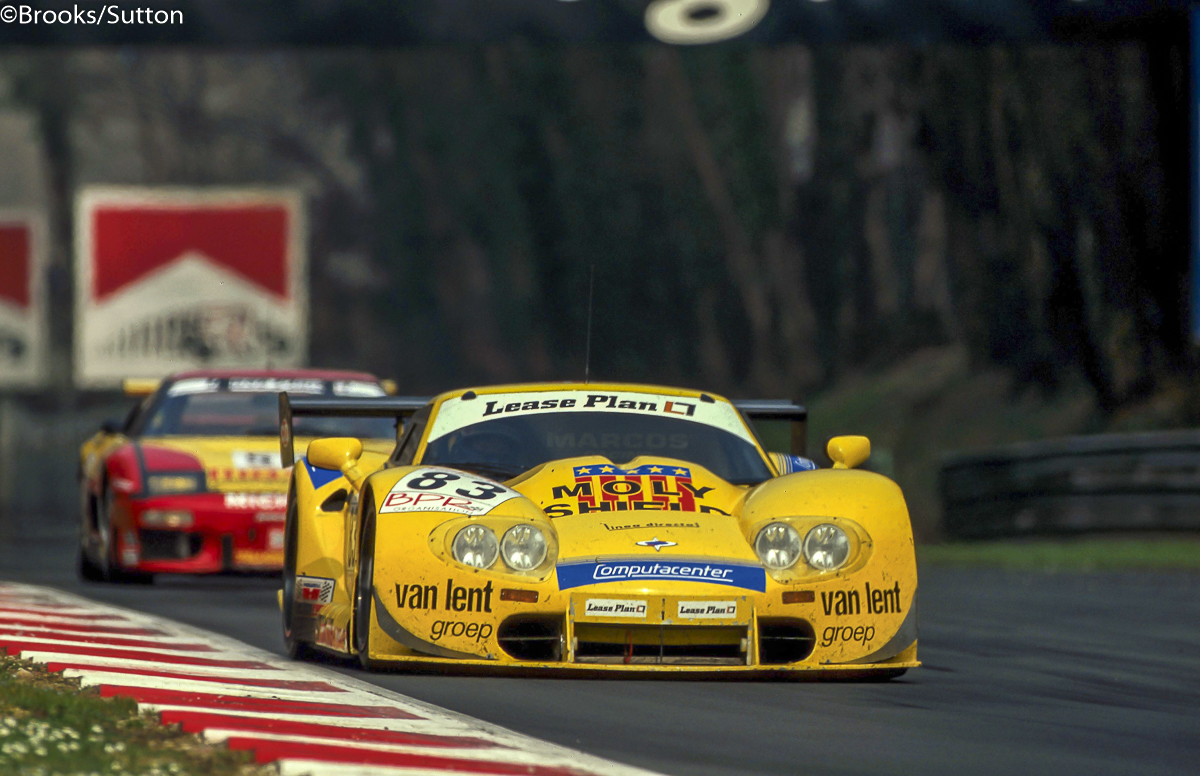
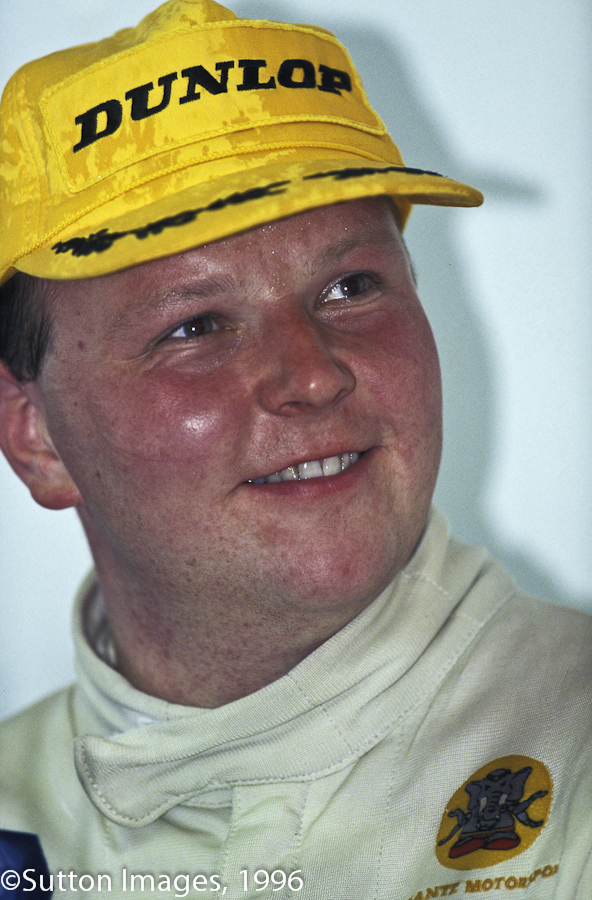
The same will happen to the GT3 racing these days.
Dear John
Revisiting your article after all these years brings it all back. A brilliant insight and very succinct, altogether a good read.
I race in CER so see Patrick all the time. I try to avoid mentioning BPR though.
Would there be a chance of purchasing a print/ digital copy of the Morgan pic from the WCM Silverstone 6hrs of 1981?
Kind regards
Bill Wykeham
Bill
a delight to hear from you, I am pleased that you like the article. David Price rang me to say something similar till I reminded him that he was the source of most of the inside information. BPR was a happy time for the most part and what followed was not.
Just in from Catalunya so will check the archive tomorrow to see about the 1981 shot but it should be no problem.
jb
That’s very good to see a ducument of the BPR, you have made a very good ob. I am very tutched, very good document.
TANK YOU !!!!! 😀
Valentin
thank you for your kind comments
I will try and keep up the standard.
jb
Great piece… nice to read it now… and how many wonderful photos!!! 🙂
Francesco
thank you for your kind comments, it was a great time to be racing.
jb
At a Le Mans – 1997, I think – I talked to Ray Bellm. He was scathing about what the GT1 had done to the series, and gave an example; he said that, the previous year, the McLaren runners had generally got through the entire season on one or two sets of half-shafts. Come the GT1, and McLaren tried to develop the F1 to match it. The result: they needed a new set of half-shafts for just about every single race.
BPR got it badly wrong when they allowed Porsche to drive a vaguely 911-shaped coach and horses through both letter and spirit of the regulations, followed by the equally outrageous CLK-GTR. With hindsight, they looked unprepared for what the remarkable popularity of the Global GT Series would mean to the likes of Porsche and Mercedes, and the lengths they would go to to achieve success. Of course, that’s not to say that things would have been much different had they turned down the Germans; Bernie would still have engineered a takeover of the series, and the privateers would be quietly ushered off stage.
John
Obviously remember all this, excellent article.
David
Dear Mr Brooks,
Your article is very interesting and could be the standard article for series where the costs are rising higher than the revenues and which will ALL go bankrupt one day or the other.
We just need to replace BPR by whatever series is currently going down, In France we have the mighty GT-TOUR with its impressive grid of…..13 cars, the Carrera Cup France is doing even better with 11 cars on some races.
Don’t you think the way forward is single type series where the costs and the technical regulations can be kept under control ?
Let’s face the facts that the federations are unable to balance the performance between the Ferraris, Porsches and Mercedes of the day and when the new “whatever” will come out it will make your million euro invesment unusable because all of a sudden it’s 1s slower than the new reference….
I own a small team (H-Racing) in a small series (Lamera Cup) in which we do endurance races (this year we’ll have 15h race in Magny-Cours and à 24h race in Paul Ricard) with a global running budget for the car of around 135K euros, if you put 4 drivers in the car it comes down to less than 35K for a complete season with 7 races and just under 120 hours of driving.
Our series is growiing each year, we now have close to 40 cars in existance so we have grids of no less than 25/28 cars and I personally believe it is a great way to race for “unsilly” money.
Of course there isn’t a nice logo on the front of the car but let’s face it, sponsors are gone, media are gone and now the driver has to pay for his FUN, and to pay a lot less for almost the same fun is the clever move in my opinion.
I would like to have your opinion on my theory about single type formulas.
Thanks
I’ve got a Porsche that was raced in BPR in 1995. Red 964 #25 entered by Hans Obermaier and driven by Jürgen Von Gartzen and Sandro Angelastri. I’m seeking photos of it so I can put the livery back to how it was raced. Any help vastly appreciated.
Cody
if you are still looking for photos please send me a mail at jbr7447703 at aol.com
I should be able to help as I have a new source of material
jb
Great article, and enjoyable to re-read. Amazing how in some respects, history continues to repeat itself… signed Ford at LM 2016.
También lo firman Saleen s7,maseratti MC12,y por que no BMW Z4 (v8) cuando el de calle es v6…
Pingback: A Champion Porsche | DoubleDeClutch.com
Pingback: 9:11 Magazine on the 911 GT1 EVO | FLATSIXES
Pingback: 9:11 Magazine on the 911 GT1 EVO | PassionPorsche
Pingback: The Land that Time Forgot | DoubleDeClutch.com
Nothing you wrote then is wrong or untrue, but innocence and success will always attract more organized people with deeper pockets. McLaren ran the table for 5 seasons of CanAm and people were complaining about them when Porsche arrived with the 917 turbo. Racing as a stable business with gainful employment for people who have mortgages and kids in school is a fantasy. NASCAR is the most attractive result of trying, and millions love it. Not much like sports car racing though. If you see something you like, get in early, enjoy it while you can, remember it fondly, when its gone.
I’m working on a plastic model of the 1996 Porsche GT1. Got any photos of the 1996 racing car with intercooler removed? Plumbing / tubing / wiring and Bowden cables are all part of the story, references are thin on the ground. Now there’s a McLaren F1 kit too!
I read this article when it was written. Seven years later I think it was just easy to blame the 993 GT1 to have been responsible for the downgrade of the series. In fact, the F1 GTR started the the destruction of the series the moment it entered the stage. A supercar, turned into a racer with expensive modifications only run by extremely wealthy team owners. A result emerged from the haze around people like Bscher, Bellm, Price, Dennis, Murray, Fayed etc. I can’t see that Roock, Freisinger, Kremer and Konrad were happy with that. The GT1 didn’t make it better of course, but the F1 GTR was the saturation point for the decline of the series.
Nik,
while this piece was posted here seven years ago, it was actually written and published in 1996.
The arrival of the F1 GTR did raise the bar considerably from the fairly low levels of BPR in ’94, both in performance and budgetary terms. However, I doubt that the McLaren owners’ expenditure was significantly different to that of the F40 brigade, and the arrival of projects such as the Lotus in ’96 showed that there were those who were prepared to work on road cars to convert them to race specification and be competitive. The 911 GT1 was fundamentally a racer that could be reverse engineered to road car specification. Add to that the arrival of a factory team with all the resources that a manufacturer such as Porsche could deploy and the BPR was doomed.
Maybe it was doomed anyway, Ecclestone had issued his ultimatum in late ’96 on TV rights, that would have killed off the BPR. We ended up with the madness and excess that was the first two seasons of the FIA GT Championship. Fortunately, Stéphane took on board the lessons of that particular debacle and saved GT racing, which has evolved to the global competition we have today.
Dear John,
Many thanks for sharing this article. I have revisited it several times since you published it, as the GT1 era of ’95-’97 is my favourite sportscar period.
I think one point must be made regarding the Porsche 911 GT1, and that is it was first and foremost intended for Le Mans, where the GT1 regulations required homologation for road use and one car built. The 911 GT1 was not the first homologation special in this sense, even if one discounts the Dauer 962 as a Group C car with luggage space that certainly did not confirm to the spirit of the Le Mans regs, never mind those of the BPR series. Nissan (Skyline GT-R LM), Toyota (Supra GT LM) and Honda (NSX GT1) all built such.cars in ’95 but they were not particularly successful, resulting in the 911 GT1 being scapegoated to a certain extent in my view. Where BPR fell down was allowing the 911 GT1 into the series the year after denying PC Automotive permission to run the Jaguar XJ220C in the ’95 series, even though it was the competition derivative of a road car (the XJ220S, admittedly another homologation special but at least more than one was built). This double standard gave the impression that the rules could be bent if the price and politics were right, not encouraging to privateers. Of course it is ironic that in the ’97 FIA series Porsche did supply privateers with the 911 GT1 but it was rendered uncompetitive by restrictors because of its dominance in the ’96 BPR rounds it participated in.
I must say that the 911 GT1 is a paragon of virtue compared to the Mercedes CLK GTR, which (as another of your excellent articles reminds us) was neither homologated or existed as a single road car until the end of the ’97 season. It amuses me that the reason given for it not attending Le Mans that year was that it was not sufficiently mature for the 24 Hours rather than it wasn’t actually eligible, but then admitting it wasn’t even compliant to the less stringent Le Mans requirements compared to the FIA GT series would have been embarrassing…
Thanks again for your terrific articles on my favourite period of sportscar racing.
Best,
Greg.